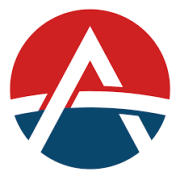What are the Unique Rules of the Self-Directed Solo 401(k)?
Many of us are familiar with the concept of a 401(k). It is a retirement plan that we typically get through an employer—and that employer often offers matching on our contributions, incentivizing us to make contributions throughout our working life. For this reason, a Solo 401(k)—especially a Self-Directed one—may not sound intuitive. That is why we have decided to help clear the air and dispel some myths about the Self-Directed Solo 401(k). Here is what you will need to know.
Note: if you want to follow along, you can view our page on Self-Directed Solo 401(k) accounts here. However, we will be providing some additional context to help make sense of these accounts.
What is a Solo 401(k), as Opposed to an Ordinary 401(k) Plan?
The IRS features information on “One-Participant” 401(k) plans, of which a Solo 401(k) is one type. As the IRS says:
The one-participant 401(k) plan isn’t a new type of 401(k) plan. It’s a traditional 401(k) plan covering a business owner with no employees, or that person and his or her spouse. These plans have the same rules and requirements as any other 401(k) plan.
With that in mind, think of a Solo 401(k) plan as simply a version of the 401(k) plan that you can use yourself, if you are self-employed without any employees. The rules and the basics are the same: you are still saving for retirement using the income you generate.
Like any other 401(k) plan, a Solo 401(k) plan allows for tax-deductible contribution. This means that on the back end, the IRS will expect you to take Required Minimum Distributions (upon turning the age of 72). But in the meantime, investors will be able to save on their yearly tax bill by deducting contributions toward a Solo 401(k), which incentivizes further investment.
Why a Self-Directed Solo 401(k) Plan?
Self-direction is a strategy investors use to open all sorts of possibilities with retirement investing. For example, a Self-Directed IRA can hold assets such as precious metals, real estate, tax liens, and private companies. This means that with the high contribution limits of a Solo 401(k), an investor can seek returns from a good piece of real estate investing—which in turn may help them build a sizable nest egg for retirement.
Of course, self-directing also means that investors are calling the shots. By working through a custodian, investors will decide where their assets are invested, and which asset classes they want to include. Typically, a company offering a 401(k) plan will do it through one specific financial institution, which may have limited options when it comes to selecting mutual fund investments, for example. A Self-Directed Solo 401(k) means high contribution limits and more freedom in choosing the assets you include.
What to Know About a Self-Directed Solo 401(k) Plan
Because the contribution limits are so high—currently up to $58,000, depending on your specific income (you may have a different contribution limit depending on income)—the Solo 401(k) has obvious appeal for investors, particularly those who want to use a successful self-run business to help them catch up on their retirement contributions. It is important to understand, however, that there are responsibilities when it comes to self-direction. A Self-Directed IRA administration firm in your corner can help act as a custodian, but they cannot make your decisions for you. That is why it is so important to stay informed, know what you are doing before you take the plunge, and ultimately, decide to remain informed in your investing years.
Interested in learning more about Self-Directed IRAs? Contact American IRA, LLC at 866-7500-IRA (472) for a free consultation. Download our free guides or visit us online at www.AmericanIRA.com.










